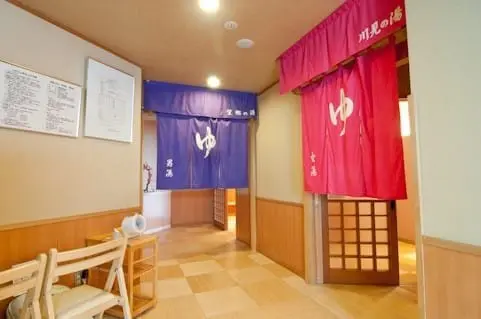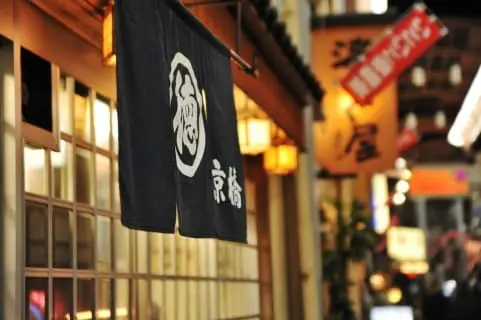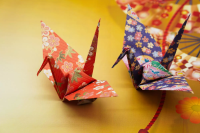Noren (Entry Curtains) - Japanese Encyclopedia

Noren is the curtain-like fabric that hangs in front of traditional Japanese restaurants, izakaya bars, and shops. These chic fabric dividers not only serve as a signboard but also hold a larger meaning. Read on to find out more!
Noren: What Are These Curtains?
When traveling around Japan, you may find a vertical strip of fabric hanging in front of the entrance of stores. This fabric is called noren. This article will introduce more about these commonly found curtains that are an item unique to Japan.
What Is the Purpose and Meaning of Noren?

Noren was originally made to protect a house from rain and wind. It also kept the home warm on cold days and created a cool shade on hot summer days. However, it actually has a larger purpose and meaning.
Many noren contain the names of shops or symbols of a business, called yago (*1). It functions as a main signboard for a shop. Also, the yago represents the trust and status of the shop itself.
Furthermore, when a long-term disciple of a shop leaves to become an independent worker, they are granted permission to use the yago. This privilege also shows how the disciple's shop has taken on the master's traits. In Japanese, when a disciple is allowed to work independently, the term is called "noren wake" or "the sharing of the noren."
Now, can you see why the noren holds such importance to shops?
*1 Yago: a prestigious title for businesses or kabuki actors.
What Can You Understand From Noren?
Noren is frequently used at the entranceway of shops, such as izakaya bars, small eateries, Japanese cuisine restaurants, Japanese goods shops, and even tea or seaweed shops.
Did you know that you can see if a shop is open or closed just by looking at the noren? When the noren is hung across the entrance, it signifies that the shop is in business. However, when there is nothing hung outside, it means that it is closed.
Among the Japanese, there is a common saying that goes, "If the noren is dirty, the shop is in good business." The reason is that a busy shop will have many customers touching the noren, thus making it dirty.

At the hot spring entrance, a noren is hung in front of the changing rooms to indicate between genders. It simultaneously protects the privacy of people as well.
In some houses, people use a noren curtain as a room divider. For instance, the noren can effectively hide dirty dishes in the kitchen, so they won't be visible from the dining room. It is also used to keep the warm air from escaping one room to another during colder months.
A Japanese Idiom with Noren
Since noren is seen everywhere in Japanese society, it has given rise to some idioms of its own. For example, the phrase "noren ni udeoshi" means "to push the noren with your arm." This metaphor describes a waste of time or effort, similar to the English saying of "beating the air" or "catching the wind with a net." The reasoning is that the noren hung in front of stores tends to be very flimsy. Therefore, it doesn't make sense to push against it with force, as the effect will be the same as walking past it.
Modern Ways of Using Noren

Nowadays, noren is used in many restaurants, small businesses, and some households. The curtains feature different colors and designs, including popular Japanese characters like "Hello Kitty," "My Neighbor Totoro," anime characters, famous poetry or artworks, and even western patterns to match a western-style room. It's possible to select the sizes or even customize them in some shops to accommodate the atmosphere of your home.
Noren also makes a great souvenir. The prices can vary from a few hundred yen to upwards of 3000 yen. Since it is very light, packing it into your luggage won't be a problem. You can purchase a noren at specialty shops, most souvenir shops, and even online. Why not take home a noren with a pattern of your choice as your next souvenir from Japan?
This is the official account of MATCHA's editorial department. Our articles feature useful travel information for visitors to Japan, from how-to guides to recommended places to visit.








































![[2026] Top 5 Strawberry Picking Spots in Tokushima, Naruto| Farms and Access Guide for January to May](https://resources.matcha-jp.com/resize/720x2000/2025/03/06-227165.webp)



